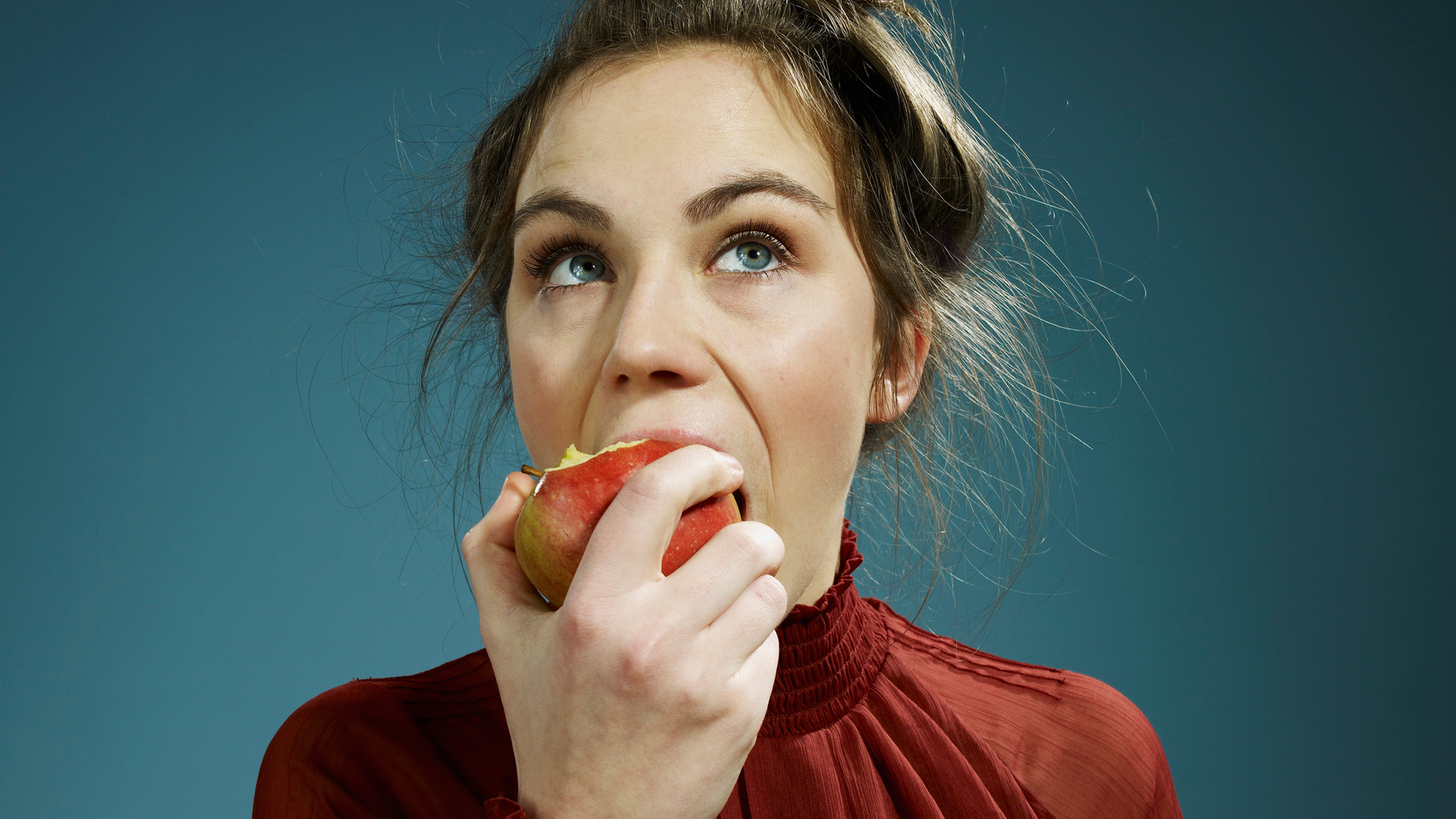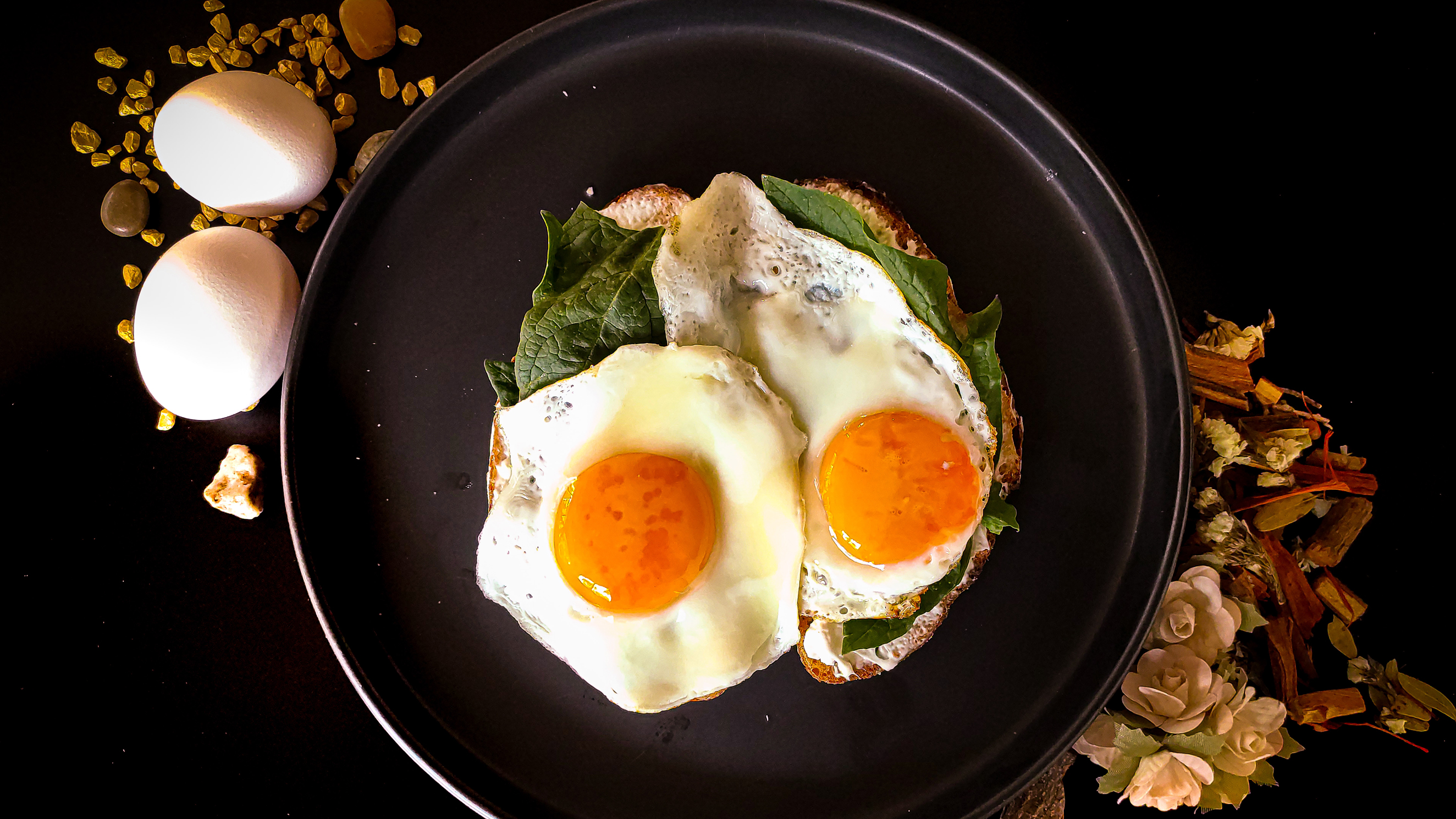How to stop yourself overeating at mealtimes, according to a nutritionist
Eating an apple before meals provides you with fiber and catachin, which will stop you eating too much and still feel full


If you're looking for ways to break your old habits and stick to your weight-loss goals in 2021, one of the most important factors when trying to eat healthy is portion control.
Although you could follow a portion size guide and use healthier cooking methods (such as the best air fryers, which use a very small amount of added fat, or the best grills, which cook meat and veggies without added carcinogens and allow excess fat to drain away) most people following a modern western diet tend to eat too much at mealtimes.
However there's an easy way to curb our appetites without resorting to medication, or going hungry. It's incredibly, embarrassingly simple: before you sit down for a big meal at home, eat an apple.

London nutritionist and author Rob Hobson said: “Consuming an apple before a meal will help to increase the overall fibre content of that meal, and help you feel full and satisfied for longer.
"It’s so easy too. Just snack on a fresh and crunchy apple as you’re preparing a meal, and then you’ll not only benefit from being less likely to eat as much of the meal, you’ll also benefit from the apples’ healthy flavonoids and fibres that can help to burn belly fat and promote satiety.”
Hobson's claims are backed by science: one study from the journal Nutrition Reviews found an increase in dietary fibre correlated with a decrease in energy intake, assisting weight loss efforts. An apple has also been found to be more filling than a chocolate bar, according to the European Journal of Clinical Nutrition.

This satiating starter will help promote good bacteria in the gut, while apples also contain catechin, which is a natural antioxidant. Antioxidants are a common nutritional buzzword, but if something has "antioxidants" in it, it is thought to prevent or slow down cell damage.
Start your week with achievable workout ideas, health tips and wellbeing advice in your inbox.
Hobson, who is promoting the movement alongside the British Apples & Pears organisation, adds: “apples are rich in polyphenol compounds that act as antioxidants, helping to protect the body from damage caused by excess free radicals and reducing inflammation in the body.
"Consuming an apple before a meal can help to increase the overall antioxidant content of your meal, making apples the go-to healthy eating addition.”
Research on antioxidants has been disputed. However, apples have loads of other good stuff in them, such as that fibre content, and vitamin C which has been found to bolster the immune system. They're also cheap and easy to come by.
It's not just apples you can consume before a big meal to reduce your intake. One study found drinking a glass of water (perhaps out of one of our best water bottle for the gym, if you're on the go) reduced how much participants ate, while maintaining the same feeling of fullness.

More ways to increase satiety
Certain foods, like apples, can maintain the feeling of fullness for longer than others and have special characteristics that offset hunger. Many contain a lot of protein, such as eggs, lean meat or fish, nuts, and low-fat dairy.
That’s why following a high-protein diet can help promote satiety. Eggs are a particularly good choice as they contain all 20 amino acids - the building blocks of protein, which we all need to function properly. Scientists found that eating eggs can help reduce hunger and extend satiety.
Not a fan of eggs? Check out our best protein powder for weight loss guide, and up your intake that way instead.
Another easy way to increase satiety is to get more fiber into your diet. Fiber increases chewing, which limits intake by encouraging the body to make more saliva and gastric juice. The result? An expansion of the stomach and increased satiety. Fiber can even help you lose weight, according to this study.
Fibre rich foods include:
- Wholegrain breakfast cereals, wholewheat pasta, wholegrain bread and oats, barley and rye
- Fruit such as berries, pears, melon and oranges
- Vegetables such as broccoli, carrots and corn
- Peas, beans and pulses
- Nuts and seeds
- Potatoes with the skin on
Similar to fiber, eating a meal with a low glycemic index (GI) increases gut hormone production, which leads to suppression of the appetite and the feeling of fullness. Low GI foods like green veg, raw carrots, kidney beans, chickpeas and lentils, are digested more slowly, and therefore raise blood sugar in a more controlled and regulated way. Because these foods stay in your digestive tract longer, you are likely to feel full for longer.
Matt Evans is an experienced health and fitness journalist and is currently Fitness and Wellbeing Editor at TechRadar, covering all things exercise and nutrition on Fit&Well's tech-focused sister site. Matt originally discovered exercise through martial arts: he holds a black belt in Karate and remains a keen runner, gym-goer, and infrequent yogi. His top fitness tip? Stretch.
